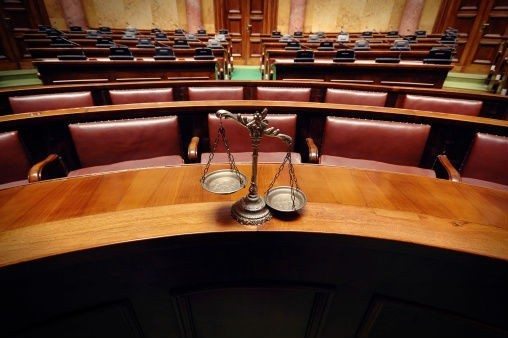 This is the next post in our series on How to Change Child Custody In Virginia. Our last post discussed what occurs during the Discovery Process of a Custody Modification Case. Today’s post will discuss what occurs during the evidentiary hearing, which is the equivalent of a trial.
This is the next post in our series on How to Change Child Custody In Virginia. Our last post discussed what occurs during the Discovery Process of a Custody Modification Case. Today’s post will discuss what occurs during the evidentiary hearing, which is the equivalent of a trial.
The Evidentiary Hearing provides a Family Court Judge the opportunity to review all of the evidence
The evidentiary hearing is the equivalent of a trial in a Virginia child custody modification case. During an evidentiary hearing, both sides will be given the opportunity to present their evidence. The person who has filed for a change in custody will attempt to show that a material change in circumstances has occurred, and that these new circumstances warrant a custody change for the good of the child. The change in circumstances may be either positive or negative; positive reasons may include a parent acquiring a new job with more flexible hours, moving closer to a child, or one parent moving to a better school district. However, negative circumstances may also be raised, such as a custodial parent’s lack of supervision, drug use, or new relationship with an abusive partner.
The side that is opposing the custodial change will then have an opportunity to present their side. This may involve outright disputing that a change in circumstances have occurred, or proving that despite the change in circumstance, the status quo continues to be in the child’s best interest. Once finished, both sides will then have a chance at rebuttal. Bench trials are relatively short. They typically last half of the day. There is no jury, and few to no witnesses to call. Once both sides have finished their arguments, the Judge will make a decision on the case, typically within a few hours.
The Family Court Judge will make a new ruling in the custody case
The Judge has several options following the Evidentiary Hearing. The Court may find that a change in circumstance has not occurred, or that the child’s well-being is best met by the current custody arrangement, and order no change. The Judge may outright change the current custody arrangement and award custody to the parent who has filed for a modification. He or she may order a new joint custody arrangement or give one parent more visitation. The decision will all be based on the facts of the case, the child’s best interest, and the child’s general preference (depending on the child’s age). Both parties must abide by the Court’s order once a new ruling has been made. A new motion to modify custody will not be entertained, until a new “material change of circumstances” occur to warrant a new review.
If you would like to learn more about modifying an existing child custody order, contact our child custody attorneys today.

Recent Comments